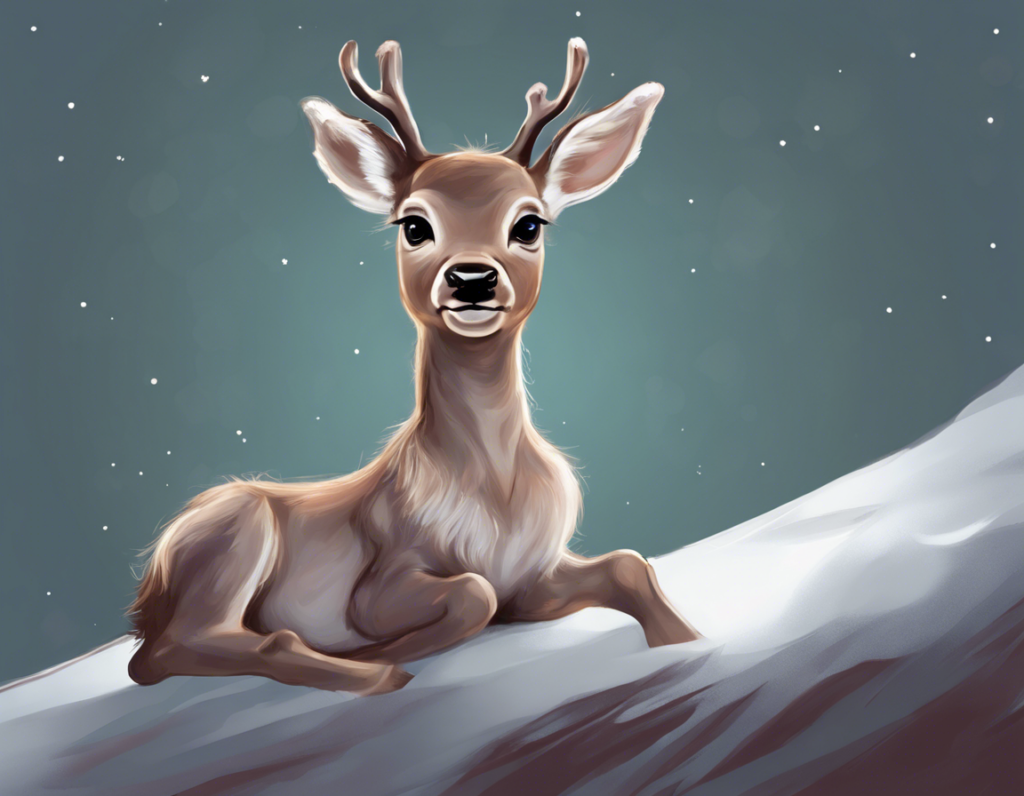Baby Reindeer Martha: A Furry Bundle of Joy!
Are you ready to embark on an enchanting journey into the world of the adorable and endearing baby reindeer, Martha? Get ready to meet this charming creature who has captured the hearts of many with her playful antics and captivating presence. In this comprehensive article, we will delve into the fascinating world of baby reindeers and discover what makes Martha truly unique.
The Enchanting World of Baby Reindeers
Baby reindeers, also known as calves, are a sight to behold with their fluffy fur, delicate features, and boundless energy. These young creatures are a symbol of innocence and purity, embodying the magic of the winter season. As they grow and mature, they become an integral part of their reindeer herd, playing important roles in the ecosystem.
Meet Martha: The Star of the Show
Martha, a young reindeer with a spirited personality and a curious nature, has captured the hearts of many with her playful antics and adorable appearance. Her fur is a soft shade of brown, complemented by a white patch on her chest that resembles a snowflake. Martha’s large, expressive eyes convey a sense of wonder and joy, making her a joy to behold.
Life in the Arctic Wonderland
Baby reindeers like Martha are born in the harsh Arctic environment, where they must adapt to survive in the challenging conditions. They rely on their herd for protection, guidance, and warmth, forming strong bonds with their family members. Martha spends her days exploring the snowy landscape, playing with her fellow calves, and learning essential skills from the older reindeers.
The Role of Baby Reindeers in the Ecosystem
While baby reindeers may seem like cute and cuddly creatures, they play a crucial role in the Arctic ecosystem. They help maintain the delicate balance of the food chain by grazing on lichens, mosses, and grasses, preventing overgrowth and ensuring the health of the vegetation. In turn, they provide sustenance for predators such as wolves and bears, completing the intricate web of life in the Arctic.
Martha’s Adventures in the Snow
Martha loves to frolic in the snow, bounding through the drifts with grace and agility. She practices her running and jumping skills, preparing for the challenges that lie ahead. As she grows stronger and more confident, Martha will join her herd in their annual migration across the frozen tundra, a test of endurance and resilience.
The Magic of Baby Reindeers
There is something truly magical about baby reindeers like Martha, from their gentle demeanor to their unwavering spirit. These creatures embody the spirit of the winter season, bringing joy and wonder wherever they go. As Martha continues to grow and mature, she will leave a lasting impression on all who have the privilege of crossing her path.
Frequently Asked Questions (FAQs) About Baby Reindeers
1. What do baby reindeers eat?
Baby reindeers mainly feed on lichens, mosses, grasses, and other vegetation found in the Arctic tundra. As they grow older, they may also consume shoots, leaves, and buds.
2. How do baby reindeers stay warm in the cold Arctic climate?
Baby reindeers have a thick layer of fur that provides insulation against the harsh temperatures of the Arctic. They also huddle together with their herd members to share body heat and stay warm.
3. How long do baby reindeers stay with their mothers?
Baby reindeers typically stay with their mothers for around 6 to 8 months, during which time they learn essential survival skills and form bonds with their family members.
4. Are baby reindeers endangered species?
While some reindeer populations are facing threats due to climate change, habitat loss, and human encroachment, baby reindeers are not considered an endangered species. Conservation efforts are in place to protect and preserve these iconic creatures.
5. How fast can baby reindeers run?
Baby reindeers are incredibly fast and agile, capable of reaching speeds of up to 50 miles per hour. Their nimble movements help them evade predators and navigate the rugged terrain of the Arctic.
6. Do baby reindeers have any predators?
Baby reindeers face threats from predators such as wolves, bears, and lynx. The herd’s collective defense mechanisms, including vigilance and swift movements, help protect the calves from potential dangers.
7. How do baby reindeers communicate with each other?
Baby reindeers use a combination of vocalizations, body language, and scent cues to communicate with their herd members. They rely on these forms of communication to alert others to potential threats, coordinate movements, and establish social bonds.
8. Do baby reindeers shed their fur?
Like adult reindeers, baby reindeers shed their fur in the spring to prepare for the warmer months ahead. This process helps them stay cool and comfortable during the summer season.
9. How do baby reindeers learn to migrate?
Baby reindeers learn to migrate by following the lead of their older herd members, who have inherited the migration routes and patterns from previous generations. Through observation and guidance, the calves gradually develop the skills needed to navigate the vast Arctic landscape.
10. What can we do to help protect baby reindeers and their habitat?
To help protect baby reindeers and their habitat, we can support conservation initiatives, reduce our carbon footprint, and raise awareness about the importance of preserving the Arctic ecosystem. By taking action to safeguard these majestic creatures, we can ensure a brighter future for Martha and her fellow reindeers.
In conclusion, baby reindeers like Martha are more than just cute and cuddly creatures – they are essential components of the Arctic ecosystem, embodying the magic and wonder of the winter season. By learning more about these enchanting animals and taking steps to protect their habitat, we can ensure that future generations will have the opportunity to experience the joy of encountering a baby reindeer in the wild.
